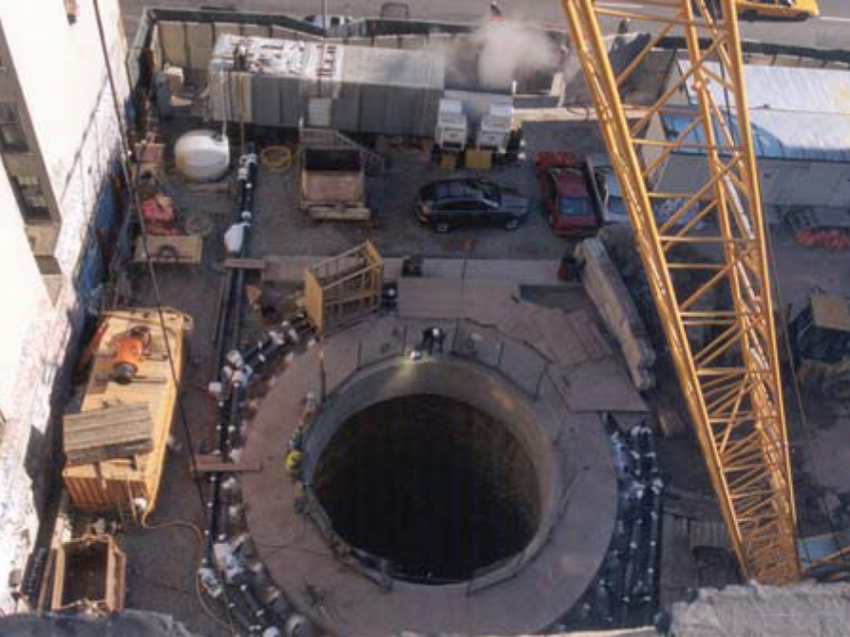An extensive instrumentation and monitoring program was instrumental in early diagnosis of moving groundwater at two shafts. Timely implementation of grouting ensured the success of freezing at these locations.

The project
Water Tunnel No. 3 spans more than 60 miles and represents one of the largest capital construction projects in New York City’s history. The new tunnel system is designed to improve distribution capability as well as to meet the ever growing demand on the existing water supply, and will allow the owner to inspect and repair the active Tunnels 1 and 2 for the first time since they were put into service in 1917 and 1936 respectively.
The challenge
The tunnel alignment lays hundreds of feet below ground in metamorphic, granitic rocks underlying the city, with many of its deep, vertical access shafts rising through glacial deposits and water-bearing sands above bedrock. The shafts are situated in the dense urban environment. The owner specified ground freezing at five shaft locations in midtown Manhattan. Excessive groundwater movement presented an unanticipated problem at two shafts.
The solution
Depth to groundwater at the shaft locations ranged from 15 to 45 ft. Variation in overburden thickness required that the freeze pipes and temperature monitoring pipes be installed to depths ranging between 75 and 130 ft from ground surface, extending 15 to 30 ft into underlying bedrock. Mud rotary drilling techniques advanced the 4-inch diameter steel pipes to depth. Each shaft location was equipped with a refrigeration plant, and all five shafts were frozen concurrently. Excessive groundwater velocities were addressed to allow proper freeze formation at two of the shafts. Ground temperatures measured within the freeze pipes themselves indicated the presence of an upstream “entrance” and a downstream “exit” window due to the movement of groundwater through the shafts. This was confirmed by piezometers throughout the site. Permeation grouting successfully reduced the permeability of the pervious zones within the aquifer and ensured timely shaft closure.
